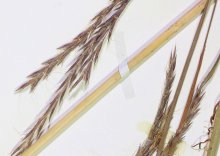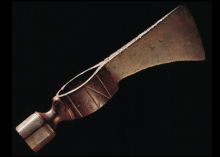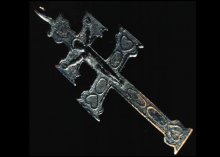The Illinois Territory (1776-1818)
The capture of Kaskaskia by a small American force in July 1778 established a claim by the new United States to the Illinois Country. The 1783 Treaty of Paris formally awarded the area east of the Mississippi River to the new nation. Many French settlers crossed the Mississippi, uneasy with the thought of living under American government. Others stayed on, operating businesses and participating in establishing the new government.
Native Nations, excluded from treaty negotiations at the end of the Revolutionary War, faced yet another challenge for their territory. Between 1803 and 1812, Native Americans, who did not fully understand the concept of private property and were often under duress, ceded most of their land in Illinois to the United States for goods and annual payments.
The land that was to become the State of Illinois was once two-thirds covered by prairie. Big Bluestem (Adropogon gerardii) may have been the most widespread and abundant grass on the prairie. Big Bluestem grows in such tall and dense stands that it often outcompetes other grasses.
These fragments were discovered during an investigation of a well that had been filled in at the Williams Fort site in southeastern Illinois. The site was the location of a farmstead occupied by the family of Aaron and Tabitha Williams from about 1811-1838. To defend against the possibility of attack by Native Americans during the War of 1812, a stockade was constructed. A tavern was operated at the site in the years following the war.
As European and Native American cultures mingled, new technologies blended with tradition to create new uses for everyday objects. The brass tomahawk pipe became a popular accessory, as it was useful in the field as a tool or as a weapon of war. During ceremonies, it was used as a pipe to smoke with friends or to cement agreements. Tobacco would be added to the metal bowl (opposite the blade) and smoked through the hardwood handle. Many similar tomahawks were manufactured by Europeans, cast of metals like brass or hammered out of old rifle barrels.
A harbinger of a changing world. French explorers and voyageurs arrive in the late 17th century. Their presence will transform Native American life and foretell of even more profound change to come. The forces of colonization nearly extinguish Native American life in Illinois.
Pages










